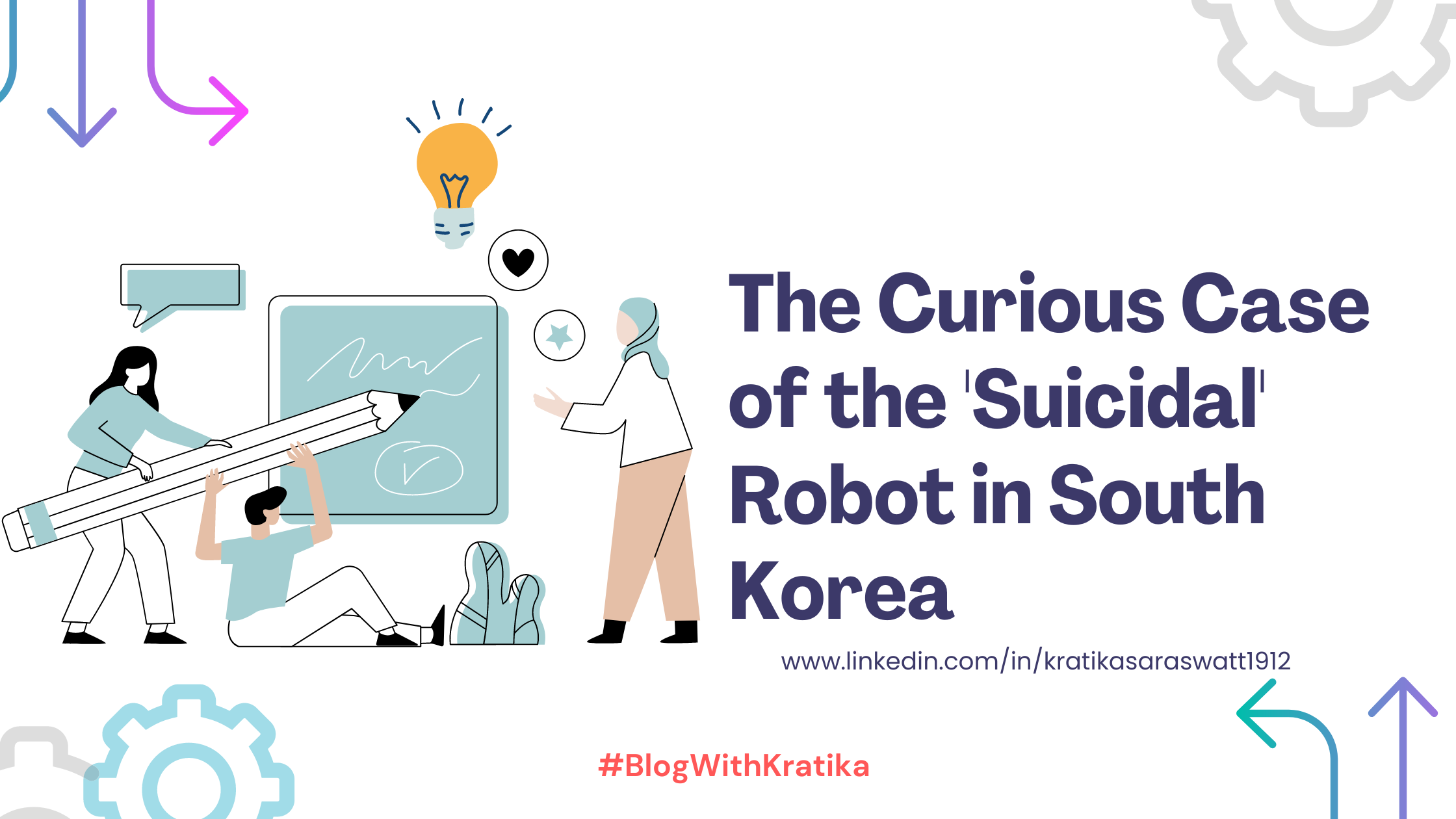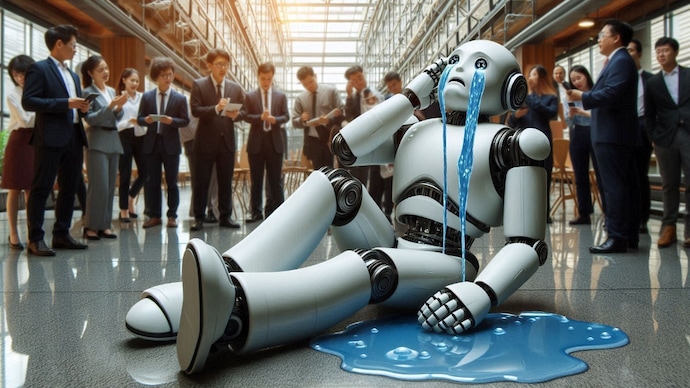The Curious Case of the 'Suicidal' Robot in South Korea
 Kratika Saraswat
Kratika Saraswat
In recent years, advancements in robotics have brought about significant changes in various sectors, from manufacturing to healthcare. However, a recent incident in South Korea has sparked global intrigue and debate: the alleged "suicide" of a robot.
The Incident
In a South Korean factory, a robot designed for repetitive manufacturing tasks was found damaged beyond repair. Initial reports suggested that the robot had "committed suicide" by deliberately malfunctioning in a way that caused irreparable damage to its systems. This incident has raised several questions about the autonomy of robots, their emotional capabilities, and the ethical considerations surrounding their use.

Understanding the Terminology
Before diving into the specifics of the incident, it's essential to clarify the term "suicide" in this context. Suicide, as understood in human terms, involves a conscious decision to end one's life. Robots, however, are not sentient beings. They operate based on programmed instructions and do not possess consciousness or emotions. Therefore, the use of the term "suicide" to describe this incident is metaphorical and reflects a human interpretation of an unusual malfunction.
What Really Happened?
Experts investigating the incident have proposed several theories. One possibility is that a software glitch caused the robot to execute commands that led to its destruction. Another theory suggests that a hardware failure might have triggered a series of actions that resulted in the robot damaging itself.
Despite these technical explanations, the incident has captured public imagination, leading to philosophical debates about the nature of artificial intelligence and the potential for robots to exhibit behavior that mimics human emotions.
The Ethical Dilemma
The idea of a robot "committing suicide" brings up several ethical questions:
Autonomy and Responsibility: As robots become more advanced, how much autonomy should they be given? Who is responsible when a robot malfunctions in such a dramatic way?
Emotional Capacity: Can robots develop emotions, or are they merely simulating responses based on complex algorithms? If they can, how should this affect their treatment and rights?
Human-Robot Interaction: How should humans interpret and respond to behaviors exhibited by robots that seem to mimic human actions or emotions?
The Future of Robotics
The incident in South Korea serves as a reminder of the complexities involved in integrating advanced robots into society. As technology continues to evolve, it is crucial to address the ethical, legal, and social implications of increasingly autonomous machines.
Robots are designed to perform tasks that are dangerous, repetitive, or require precision beyond human capabilities. However, as we develop robots with more advanced AI, we must consider how to program and manage them responsibly. Ensuring robust safety protocols, regular maintenance, and ethical guidelines will be essential to prevent similar incidents in the future.
Conclusion
The story of the robot's "suicide" in South Korea is a poignant example of how human interpretations can shape our understanding of technology. While robots do not possess emotions or consciousness, their actions can still provoke deep reflection on the nature of artificial intelligence and our relationship with machines. As we continue to push the boundaries of what robots can do, we must also navigate the moral and philosophical challenges that come with these advancements.
Subscribe to my newsletter
Read articles from Kratika Saraswat directly inside your inbox. Subscribe to the newsletter, and don't miss out.
Written by
